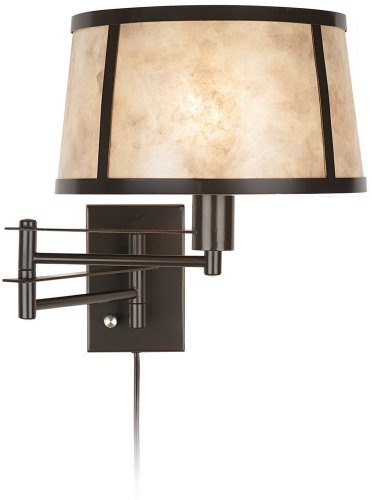antique Lamps - Kung Hei Fat Choi
"Kung Hei Fat Choi!" or "Happy New Year!" - the great festival of the Chinese speaking world. It is unknown exactly when and how this event began, except to say that with China's 5000 years of history, not being able to recall the beginnings of such celebrations can be well understood.
In modern China, the New Year celebration is known as the Spring Festival and is carefully one of the most important events in China. This important occasion carries with it safe bet obligations for citizen preparing for the New Year. All disputes must be resolved, so that the New Year can begin with a clean slate. Spring cleaning is done, so that the house can greet the New Year clean and tidy & all clothes have to be cleaned and pressed.
Lamps & Light Fixtures Wall Lamps Swing
The date of the Chinese New Year is established by the lunar calendar, so the first day of the lunar year marks the date of the Chinese New Year. This places the date of the New Year between late January and early February. Ultimately at midnight, on New Years Eve, the fun begins!
At the stroke of twelve the New Year is greeted by the explosion of fireworks, bells, drums and gongs. In original China, or, Imperial China, the midnight cannonade was designed to drive away evil spirits and so cleanse the child New Year.
It is at this time, that every city witnesses one of China's most ancient cultural events, the dragon and lion dance. Straight through the streets of every town and hamlet the dragon, to the sound of fireworks, drums and gongs, snakes his way across China.
The dragon is the most ancient of Chinese cultural symbols and is highly revered and honored by the Chinese people. Unlike in the West, the Chinese dragon is a totally benign creature, the deity of water, rivers and streams and contribution insurance from the threat of drought. The lion, the fastener of power and courage, protects and wards off mischievous spirits.
With the tradition of New Years celebration so deeply embedded in the Chinese psyche, no exertion is spared in traveling vast distances to bring gifts and spend this important holiday with the family. Known in China as the "Spring Movement", it is, in fact, the largest mass migration on the planet!
The week long holiday is filled with entertainments and extra New Year dishes. House window frames and doors are freshly painted and the houses brightly decorated with lights and red lanterns, red being the symbolic colour for wealth and good fortune. Children receive the original red envelope, containing money, fast spent on treats and sweets!
With a major tradition being the exchanging of gifts, the focus of this article is the original gift of "New Year" or "Cracked Ice" blue and white Chinese porcelain.
Oriental porcelain was introduced to the West as early as the mid 15th century, when high-priced examples appearing in Lisbon, Portugal being the first to acquire trading rights from Imperial China.
Prior to this, porcelain, both Chinese and Japanese, was seen in Europe as a mystical substance with roughly magical properties, from a place that very few knew of, let alone, had been to. Most information was still based on the visit made by Marco Polo in 1275.
The "secret" of blue and white porcelain is cobalt, a natural mineral ore which gives the blue. Cobalt was then confined to Persia, today's modern Iran. This trade between China and Persia of course propelled the Chinese garnish of porcelain into a new direction, with the first truly blue and white porcelain made colse to 1290 Ad.
The production of porcelain in China has had a history of thousands of years and is the very intuit we call porcelain "China" because that's where it came from!
Not only porcelain, but all original Chinese art is filled with symbolic meaning and has all the time played a highly important role, as with gifts offered for auspicious occasions, like birthdays, births and weddings, with good wishes offered for long life and a comfortable old age.
If we randomly select just four symbols and their meanings, symbols frequently found in Chinese art, these could be -:
Dragons - a fastener derived from ancient traditions. This famous fastener ranks first among all. The five-clawed dragon was reserved for the Emperor from ancient times until the end of the last dynasty. The four-clawed dragon associates with royalty and the three-clawed dragon with the Chinese people.
Bamboo - standing for longevity and courage in adversity. As bamboo is evergreen and because it grows straight, it was a popular fastener for an honest mandarin official.
Bats - the homonym "fu" stands for both "bat" and "happiness", hence the bat is a popular symbol. Five bats shown together signify the Five Blessings: longevity, health, wealth, virtue and a natural death.
Crane - the crane is someone else longevity fastener as the bird was conception to live for two thousand years. A bird flying or seeing towards the sun represents a desire to rise high in the government hierarchy.
In original China, New Year, or, cracked ice decorated porcelain was a popular gift with its message of spring and new beginnings. The garnish consists of a rich blue ground to simulate ice, or, freezing water. This supervene is produced, sometimes with heavy brush strokes, or fine white lines produced by exposing the underlying white porcelain. This freezing ice ground is broken up by branches of plum blossom flowering on old wood, again, the garnish achieved by exposing the underlying white porcelain. The symbolism here speaks of the winter's ice giving way to the welcome arrival of spring, with budding plum blossom about to break through.
Chinese original art is filled with symbolic meaning and has all the time played a highly important role as with gifts offered for auspicious occasions. The gift is one thing, the message is something else!
antique Lamps - Kung Hei Fat Choi
Check Price on - Lamps & Light Fixtures Wall Lamps Swing Products
Jointer Knives Tool Accessories,Setting Jointer Knives,Planer & Jointer Blades,Power Tool Baby Girl Hats With Flowers - Flower Cotton Hats - Infant to Toddler Hats - Baby Headbands














